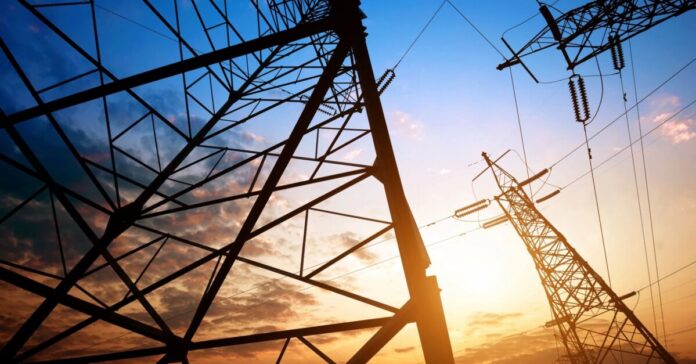Have you heard that a government study projected that 90 percent of the population will die in the first year after a long-term grid outage caused by an EMP? The same ugly statistics would hold regardless of the reason the grid went down, such as a cyberattack, a targeted attack on key distribution points, a CME, or any other natural or manmade disaster that wipes out the grid in a manner that prevents it from being restated.
What are you doing to ensure you will be in the 10 percent who survive? Do you have a plan to survive a national or global-grid-down scenario?
Vehicles
One critical component of the outage is whether you have a working vehicle. A cyberattack or a physical attack on key transmission stations and transformers will have no impact on cars and trucks. An EMP may damage some, or perhaps many, but no one knows for sure. However, some testing shows that an EMP may shut down a car that is in use, but you can turn it off and restart it again, almost like rebooting a computer.
I am unaware of EMP testing conducted on electrical vehicles. However, in a grid down scenario, they cannot be recharged unless the EV owner has a very large solar power system.
For this post, we are going to assume your vehicle works, allowing you (and everyone else) to drive. This is a huge benefit for those choosing to bug out. It may also add to the chaos that will develop as people in densely populated areas will get into their cars and head to the hills (literally, in some cases). This will cause problems for those living within one gas tank of large cities.
Immediate Failures
During a blackout, the first thing we notice is the lights go out and electrical-powered devices, appliances and equipment grind to a halt. That is just what’s visible in our homes or office. Far more stops working behind the scene. Worse, there will be a cascading effect over the next 24 to 72 hours.
If you thought the problems associate with the recent CrowdStrike computer disruption were bad, a total grid failure will be worse. Here’s an example of what will fail when the power does:
- Traffic lights and other signage and signals. This will make driving more difficult and dangerous
- Elevators and escalators, trapping some people
- ATMs and credit card processing, making it difficult to get money or buy things
- Desktops and other computers without batteries
- Much of our manufacturing will go into shutdown mode
- Many businesses will close, including banks and retailers
- Medical appointments will be canceled and pharmacies will close
- Most gas station won’t be able to pump gas
- Subways and other rail and mass transit that require electricity to function will not roll. Buses will, but slowly because of the lack of traffic signals
- Airports will allow planes to land but not take off, with the possible exception of private jets from small airports
- Communication will be disrupted, but many cell phones will work for at least eight to 24 hours
- If you can get any news, it will be vague and reassuring, but they will be lying to you to prevent panic
One thing about Day One to keep in mind is most people will not realize the extent of the problem and will try to take it in stride.
Day Two and Three Failures
Backup generators will begin to run out of fuel and batteries will die because system designers didn’t expect an outage to last more than 36 to 48 hours. This will happen at different rates based on several variables. Some services will remain in your area, but not in others, and vice versa. Even when local services are up, they may be unable to connect with central services they rely on to function. For example, if a local gas station has power, it may not be able to accept credit cards because the processor is down. As more and more backup systems fail, the cascade speeds up.
Things you can expect to go wrong during this period:
- Certain websites will start to fail or become unreachable
- Cell phone networks, and likely your cell phone, will cease to function
- Your ISP will go offline, meaning you won’t be able to get online even if you have backup power or a working cell phone
- There will be little or no access to news but plenty of rumor and speculation
- Food in refrigerators, both in homes and businesses, begins to spoil
- Frustration over the deteriorating conditions and lack of support will build, followed by anger
- Looting will break out as people realize the police can’t be called and the security cameras are down. People who are hungry and angry that no one is taking care of them will start the looting, first at stores, but it will spread
- Any small stores or restaurants that stayed and accepted cash will close
- While you can still drive, it may be dangerous to do so in some areas
Days Four Through Seven
This is society’s last gasp. The cascade becomes a rapid descent as every last drop of backup fuel is consumed at hospitals, police stations, fire stations, and other places deemed “critical.” In a regional outage, like Houston suffered earlier this month after Hurricane Beryl hit, supplies of fuel, food and water can be transported in from elsewhere. In a national outage, there is no “elsewhere.” No one is coming to your rescue.
- Larger and larger portions of the Internet will become unreachable as parts of the backbone and all the different data centers run out of backup power
- Other utilities begin to fail, including water and natural gas
- Looting escalates when people see others getting away with it and join in. For the unprepared, looting will be part of their hastily developed survival plan.
- Public servants will not report to work, including police, fire, EMS, doctors, etc. They will either stay home to protect their loved ones or they will have already bugged out
- Looting will lead to arson and without the fire department, entire city blocks will burn
- Anger grows, as does desperation. People will no longer be nice
- The strong begin to prey on the weak and rates of assault, robbery, rape and murder skyrocket
- Home invasions start
- Gangs take advantage of the lack of police to go to war with each other while the smart ones go to war on the rest of us
- Expect roadblocks and highway robbers
The higher the population density, the worse things will be. The veneer of civilization will disappear.
The Importance of Acting Quickly
The above lists should make it obvious you need to act quickly in the event of a wide scale blackout. Perhaps the first thing to do is to determine exactly how much of the country is affected. If you determine that this is a total grid-down event, then you need to determine whether to bug out or to bug in.
Based on what has happened in prior blackouts, like the Great Northeast Blackout or the New York City Blackout, it will take some time for the general population to realize how bad things are. This will give you a window of normalcy in which to act before conditions deteriorate. The faster you decide to bugout, for example, the easier your trip will be.
Based on the above timelines of cascading failures—and the times may different in your area based on a number of factors—you have three days or fewer to get out of dodge and to your bugout location. Or, if you are bugging in, there is a similarly brief window in which to get any last-minute supplies and to set up your security plans.
Here’s what bugging out should look like:
Bugging Out
Day 1
- Decide to bug out
- Get everyone home from work, school, or wherever they are
- Pack the vehicle or vehicles you are taking
- Fill your gas tank(s) from your spare gas cans
- If you are heading to someone’s house, text them to let them know you are coming. A text has a greater chance of getting through than a phone call
- Leave before dark, preferably by vehicle
Day 2
If you have not left yet, do so immediately, preferably in the very early hours, like 4 a.m. when there may not be much traffic. The sooner you can get out of the city or suburbs, the safer you will be. Take back roads and try to avoid cities.
Day 3
You should have arrived or be arriving. Be careful, there may be official or informal roadblocks, to keep “outsiders” out. You will need to talk your way through these by demonstrating that you have someone to stay with.
Bugging In
If you are bugging in, like we are, your objectives will be different.
Day 1
- As soon as you realize this is a wide event and not a local outage, text anyone who is planning to bugout to your place and encourage them to head your way IMMEDIATELY.
- Get the money from your emergency cash stash and buy last-minutes things you may need. Don’t go to Walmart or the big grocery store because they will shut down. Try shopping at small mom-and-pop general stores where they may remain open even without power.
- Make arrangements for those coming to stay with you, such as setting up bedding
- If you don’t have refrigeration, start eating and canning things that were in your freezer
Day 2
- Talk to your neighbors and solidify any plans for mutual support and security. Let them know you have friends coming to stay with you. Ask if they need anything, and if it is a need you can easily meet, do so.
- Begin to implement your security plan.
- Continue canning goods from your refrigerator and freezer. You can cook stew, chili and soup with meat and can them.
The 10 Percent
Will taking these steps guarantee you are in the 10 percent who survive? No, but it will go a long way to ensuring you are not in the 10 percent who die first.
The keys to your initial survival are:
- If you live in a city or the suburbs, have a bugout location where you know they will take you in
- Take advantage of the early hours where there will be some semblance of normalcy
- Bug out as soon as possible







